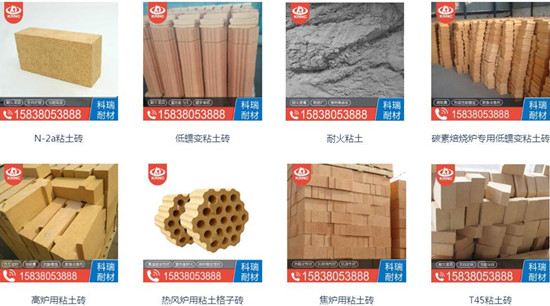Plasticity
Fire clay into the right amount of water to form mud, when it is gradually increased by the external force, the gradual deformation without cracking or damage properties called plasticity. The plasticity of clay has great influence on the molding performance of refractory clay. The plasticity of clay is usually expressed by the plasticity index and plasticity index, and the plasticity of fireclay can also be judged by the water content when it reaches the maximum plasticity.
Plasticity index method refers to the difference between the upper limit and the lower limit of water when clay is clearly plastic state (the range of water content change) to measure the strength of its plasticity method. Plastic index is the direct measurement method of clay plasticity, is a certain diameter of clay ball, when the external force began to deformation and began to produce cracks, to stress (deformation force) and strain (deformation degree) product to express its degree of plasticity. The strength of clay plasticity depends on the mineral composition of the clay, the fineness and number of particles, and the nature of the liquid phase. In the production, the main ways to increase the plasticity of clay are: remove such as quartz and other non-plasticity impurity minerals; Clay is finely milled to increase its dispersion; Add an appropriate amount of plastic material binder (such as sulfite pulp waste liquid, etc.); Vacuum treatment and trapped mud and other methods.
Dispersion
Dispersion reflects the degree of dispersion of the clay. It is usually expressed by its particle composition or specific surface area. Clay is a highly dispersed material, generally no more than 10μm. The technological properties of clay are mainly determined by the number of particles smaller than 2μm. Generally, the coarse particles contained in clay (greater than 0.05mm) are the concentrated impurities (such as quartz sand, pyrite and parent salt residues, etc.). Soft clay is a highly dispersed material, while hard or semi-hard clay is difficult to disperse in water, and it needs to be dispersed after a long time of grinding.
Associativity
Binding finger clay has the ability to bond non-plastic materials, even if the molded brick retains its shape, and has some mechanical strength properties. Generally speaking, the higher the dispersion degree of clay, the larger the specific surface area and the stronger the binding property, but it also depends on the type, composition, particle composition and characteristics of clay minerals. In the actual production, it is usually the plasticity of adhesion to judge the strength of its binding property.
Sinter property
Sinter property is used to characterize the density and strength of fireclay sintered at a certain temperature. During the sintering process, with the discharge of water, combustion of organic matter, decomposition of various carbonates and sulfates, a series of physical and chemical changes, such as liquid phase, make its color from dark to light, porosity gradually decreases, and volume density and strength reach the highest. If continued heating and overburning expansion occur, its porosity increases instead, and volume density and strength decrease.
The sinter property of clay is usually measured by volume density, porosity, water absorption, heating shrinkage and so on.
Kerui refractory clay and some of its products are: refractory clay, clay brick, low creep clay brick, clay lattice brick, T45 clay brick and so on.

